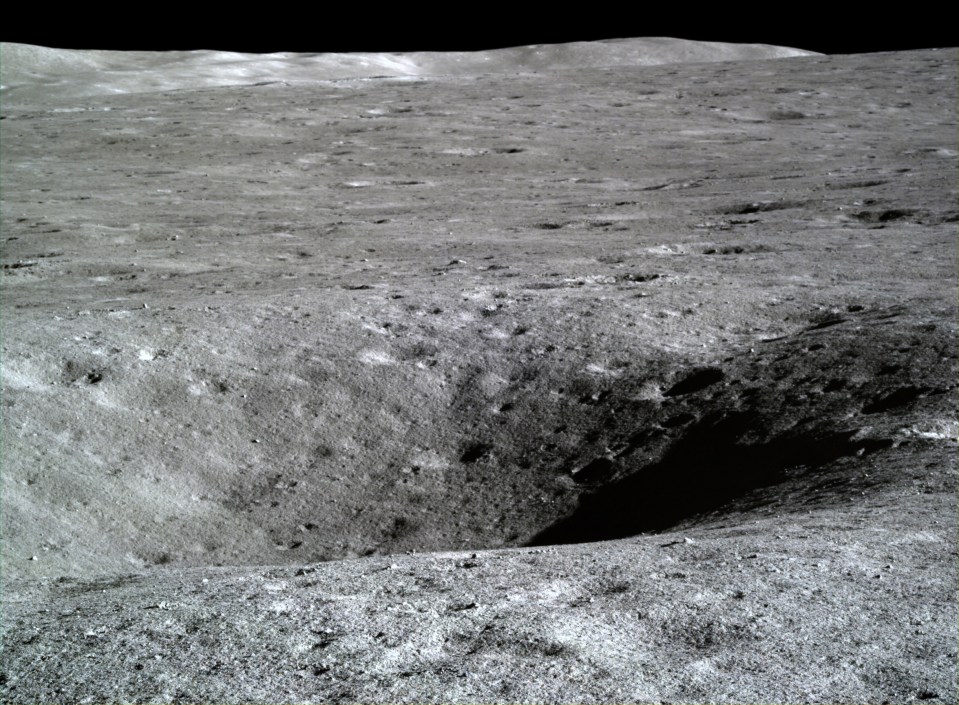Japan moves in on hidden $4trillion energy source on the Moon as space race against US and China escalates
Japan wants a piece of the trillion-dollar future lunar mining sector, which is expected to be a lucrative industry.
It is estimated that the Moon contains one to three million tons of Helium-3, a rare gas that would power Earth for the next 10,000 years.
Magna Petra, a lunar extraction company, has teamed up with ispace, a Japanese lunar exploration company, to harvest Helium-3 on the moon and transport it back to Earth.
In addition to water, the cislunar economy will rely on numerous other vital commodities, according to a statement released by Takeshi Hakamada, the founder and CEO of ispace. “And it is important to work to make use of these resources.”
The precious gas, which makes up around 0.0001% of the planet’s helium, is scarce on Earth.
It is believed to be concealed in “cold traps” on the outer regolith layers of the Moon, which makes its extraction comparatively simple.
READ MORE ABOUT THE MOON
Nuclear fusion, a virtually infinite energy source, may consume helium-3 without emitting any of the hazardous radioactive waste.
The Lunar and Planetary Institute, a research organization established in 1978, estimates that the price of one gram of Helium-3 would be around $1,400.
Three million tons would be worth $3.78 trillion, while one ton would be worth almost $1.26 billion.
The material will be harvested in a “non-destructive, sustainable” manner, according to a joint statement from Magna Petra and iSpace.
But as the US and China also focus on valuable resources, scientists are worried about a lunar land grab.
Joseph Silk, an astronomer at the Paris Institute of Astrophysics and Johns Hopkins University, told Space.com earlier this year that the conflicts between different space agencies and commercial interests put us at risk of a Wild West situation.
There are only so many suitable lunar locations.
Stunning Nasa-backed space homes to be printed by giant robots on the Moon
Scientists think that one of the Moon’s most resource-rich regions is the south pole.
Water-based ice, which is essential for future human living on the Moon, is also most likely to be found there.
Both China and the United States are competing to be the first to send humans to the moon, a distinction not accomplished since Apollo 17 in 1972.
After several delays, NASA is now planning to put Artemis III people on the lunar south pole in the middle of 2027.
However, in 2030, China intends to send its own astronauts to the southernmost part of the Moon.
ANALYSIS: Are we in a new space race?

By Senior Technology & Science Reporter Millie Turner
The space race of the 1960s is experiencing a resurgence due to visions of humans on the moon once more.
The US is once again competing against whichever global powerhouse is bold enough to accept the challenge, even if China has replaced the Soviet Union in this edition.
With fistfights over computer chips, artificial intelligence, and TikTok—which has somehow descended into a race for the stars—the two are already embroiled in an Earthbound tech war.
Bill Nelson, the head of NASA, has also not hesitated to refer to it as a “race”.
According to Statista, China spent almost $14 billion (11.2 billion) on its ambitious space program in 2023 under President Xi Jinping.
Despite dominating the market thus far, the US space agency only recently accepted the painful reality that the Viper Moon mission will be canceled after $450 million had already been spent, citing escalating expenses and delays.
Pushbacks have also been experienced by NASA’s own Mars Sample Return, whose planned launch date of 2028 has been pushed back into the 2040s.
China’s ability to create things quickly and effectively might tip the scales, with impacts we might be witnessing right now as the nation appears poised to surpass NASA to reach Mars.
That date will undoubtedly be changed at some point in the future, though.
Note: Every piece of content is rigorously reviewed by our team of experienced writers and editors to ensure its accuracy. Our writers use credible sources and adhere to strict fact-checking protocols to verify all claims and data before publication. If an error is identified, we promptly correct it and strive for transparency in all updates, feel free to reach out to us via email. We appreciate your trust and support!













